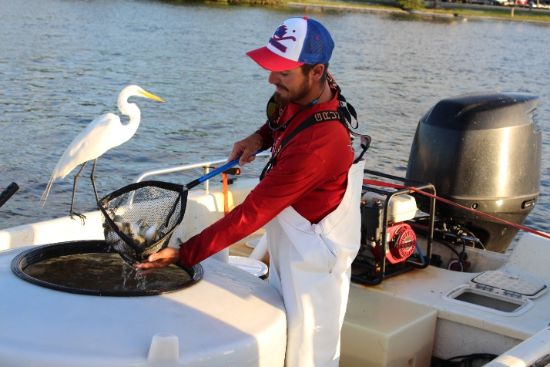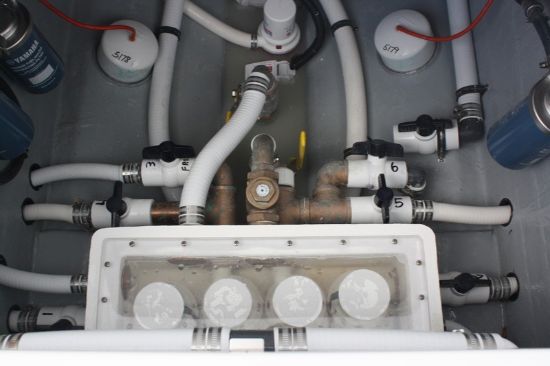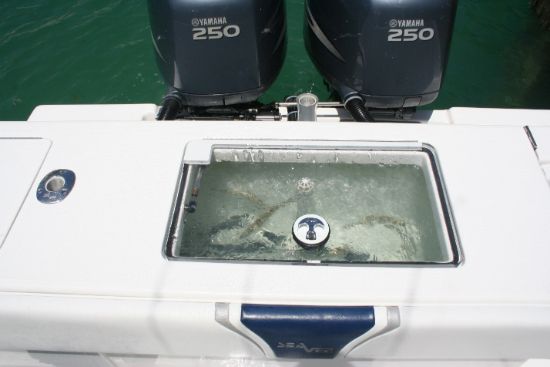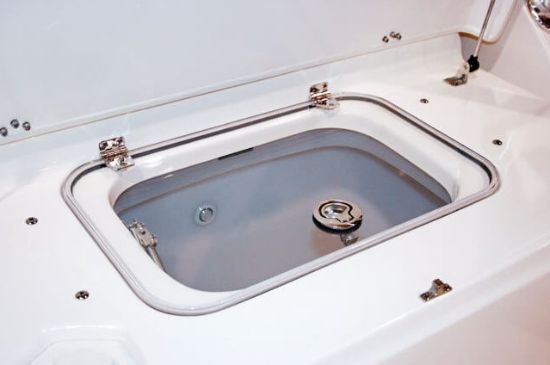The Ultimate Livewell

Livewells are tricky to get right; one design flaw can be ruinous, and very few livewells out there have all the different features that add up to the ideal. And for a live bait angler, this can be of paramount importance. So, how can you tell if the livewell in a boat you’re looking at makes the grade? Here are some of the critical items to look for, if you want to have the ultimate livewell.
Rounded Sides.
This feature is about as important as it gets. If you’ve ever seen fish in a square fish tank, you know they bang into the sides quite often. And when they get frantic — as live baits in a livewell often do — they may bury their nose in a corner and smack against it until they beat themselves to death. So, a livewell isn’t any good unless it’s either oval or rounded.
Directed Flow.
Serious livewells don’t have a single port or inlet, but a full-column inlet which blasts water into the livewell and creates a circular current from the very top to the very bottom. Working in tandem with the rounded shape we talked about a moment ago, this allows the baitfish, which naturally want to swim into the current, to swim in circles or essentially “hover” in place. Having the top-to-bottom flow also eliminates “dead spots” (areas of low oxygen) in the livewell, which can form at the top or bottom if a single level inlet is used.
High-Volume Flow.
Baitwells with weak pumps don’t cut it, especially if you plan to keep a big school of delicate baits lively and energetic. How much flow is enough? That’s a hard call because it depends on the well’s volume. Generally speaking, however, you’ll want to see a 400 GPH (gallons per hour) pump only on the smallest livewells, at least a 1,000 GPH pump on a mid-sized well, and 2,000 GPH or more on a full-sized (40 gallons or more) livewell.

In the case of multiple livewells, each well should have its own dedicated pump, and the best livewell systems also have a built-in back-up pump. In many cases, a pair of wells will each have its own pump, and a third pump is plumbed to serve as a backup for either-or in case one fails. Note that pump-share arrangements, where a livewell and a washdown hose share a single pump and you direct the flow via a valve, tend to offer sub-par flow.
Capacity.
As a rule, more is better. It’s often advantageous, however, to have multiple individual wells as opposed to a single larger one. Say you plan to troll for kings in the morning and cast for speckled trout in the afternoon. Having separate livewells allows you to load one up with cigar minnow for the kings and load the other with shrimp for the trout. Many smaller and/or freshwater-oriented boats address the situation with a livewell divider or a drop-in minnow bucket. While this does allow you to keep baits separate and is better than nothing, it’s less than ideal if you need to carry a large amount of live bait.

Coloration.
Livewell interiors should ideally be baby-blue inside. You may have noticed builders trending towards this coloration for the past few years, and it’s for a good reason. Studies done at Mote Marine Laboratory, in conjunction with Florida boat-builder Pursuit, found that the bluish color more closely resembled the bait fish’s natural surroundings. As a result, it kept baits calmer. Scared, skittish baits tend to dart around and bang into the walls (even rounded ones) so this feature is a lot more important than one might think.
Viewing Ports.
Having a clear lid or a viewing port on the livewell allows you to constantly monitor your baits. Have you ever made a long run, then arrived at the fishing grounds to discover a well full of dead fish? Thanks to clogs, pump failures, and loose drains, it happens - and being able to tell at a glance when something is going wrong can save the day.

Pressurization.
Top-tier livewells, with hatches that dog down over a rubber seal, will pressurize when closed. This prevents excessive sloshing while underway. Particularly on rough, long-distance runs, this goes a long way towards keeping your baits healthy and happy.
Timers.
These are mostly seen on freshwater boats, but they have a role to play in the saltwater environment, too. They allow you to eliminate the noise of a constantly running pump and are particularly helpful on small boats that have a single battery where conserving juice becomes a concern. In the long run, they may also extend pump life since the pump doesn’t have to run continuously.
Drains.
Who cares how a livewell drains? You should. The main issue here is standpipes. Threaded ones tend to get in the way when you’re trying to grab or net a bait. The standpipes that wedge into the drain are far worse, however, because these not only get in the way but also can come free during runs through rough waters. Then the well drains, and your baits all die. Built-in overflows and drains that eliminate the need for standpipes are vastly superior.

Hatches.
If the hatch on a livewell doesn’t dog down tightly, there are sure to be problems. First off, water is likely to slosh out as you run and soak anyone sitting or standing aft. Secondly, an ill-secured hatch can swing up and down as you hit waves and create a serious racket.